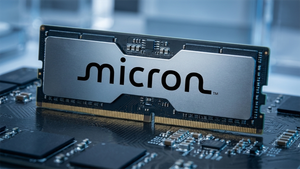
Eli Lilly and Company (NYSE: LLY) has reported a stellar second quarter for 2025, significantly exceeding market expectations and cementing its position as a dominant force in the burgeoning obesity and diabetes treatment markets. The pharmaceutical giant's impressive financial performance was largely propelled by the skyrocketing demand for its incretin-based medications, Zepbound and Mounjaro. This triumph signals a pivotal moment for Lilly, which is not only capitalizing on its current blockbusters but also strategically advancing its pipeline with promising candidates like the oral GLP-1 agonist, orforglipron.
The company's robust earnings have led to a substantial upward revision of its full-year financial guidance, underscoring an optimistic outlook for continued growth and market leadership. With aggressive manufacturing expansion plans already underway, Eli Lilly appears poised to meet the escalating global demand for effective weight-loss solutions, potentially reshaping the competitive landscape of the pharmaceutical industry and offering new hope for millions struggling with obesity.
What Happened and Why It Matters
Eli Lilly's (NYSE: LLY) Q2 2025 earnings report was nothing short of spectacular, revealing a total revenue surge to $15.56 billion, marking a remarkable 38% increase compared to the same period in 2024. This exceptional growth was predominantly fueled by the overwhelming success of its cardiometabolic drugs, Zepbound and Mounjaro, both utilizing the tirzepatide molecule. Notably, while the public discourse often links Eli Lilly with Wegovy, it's crucial to clarify that Wegovy is a product of its competitor, Novo Nordisk (NYSE: NVO); Eli Lilly's success in this space is firmly rooted in Zepbound for obesity and Mounjaro for type 2 diabetes.
Specifically, U.S. revenue for Zepbound skyrocketed by an astounding 172% to $3.38 billion in Q2 2025, up from $1.24 billion in Q2 2024, a testament to its rapid adoption and high demand. Mounjaro also demonstrated robust growth, with worldwide revenue climbing by 68% to $5.20 billion. Combined, these two powerhouse drugs generated a colossal $8.58 billion in the second quarter, accounting for approximately 55% of Eli Lilly's total revenue. This indicates a highly successful strategic pivot and execution in a market segment with immense unmet medical need.
Beyond its current market successes, Eli Lilly is actively preparing for the future with the imminent submission of orforglipron, an investigational once-daily oral GLP-1 receptor agonist. The company intends to submit orforglipron for regulatory review for the treatment of overweight or obesity in 2025, with a subsequent submission for type 2 diabetes anticipated in 2026. Positive Phase 3 trial results, including superior efficacy compared to oral semaglutide (Novo Nordisk's (NYSE: NVO) Rybelsus) in the ACHIEVE-3 trial for type 2 diabetes, underscore its potential as a highly convenient and effective oral alternative, which could significantly broaden patient access and adherence.
To address the soaring demand for its incretin products, Eli Lilly has embarked on an ambitious manufacturing expansion, committing over $23 billion to drug production since 2020. This includes a significant $5.3 billion increase in investment for its Lebanon, Indiana, manufacturing site, bringing the total investment there to $9 billion, aimed at boosting active pharmaceutical ingredient (API) production for tirzepatide. The company projects an impressive 1.8 times increase in saleable incretin doses in the latter half of 2025 compared to the latter half of 2024, signaling a determined effort to alleviate supply constraints and solidify its market leadership.
A Clear Horizon: Winners and Challengers in the Obesity Market
The most prominent winner in this unfolding narrative is unequivocally Eli Lilly (NYSE: LLY). Its strategic focus on cardiometabolic diseases, particularly obesity and type 2 diabetes, has paid off handsomely, transforming it into a pharmaceutical behemoth with unparalleled growth. The combined success of Zepbound and Mounjaro has not only supercharged its revenue but also allowed the company to capture a commanding 57% of the U.S. branded anti-obesity drug market by Q2 2025, surpassing its closest competitor. This dominance is further exemplified by Zepbound alone accounting for two-thirds of all GLP-1 prescriptions for obesity in the U.S., demonstrating its rapid and widespread acceptance among patients and prescribers.
While Eli Lilly revels in its success, its rival, Novo Nordisk (NYSE: NVO), finds itself in a challenging, albeit still strong, position. Novo Nordisk pioneered the GLP-1 agonist market with Victoza and later achieved blockbuster status with Wegovy and Ozempic. However, Lilly's Zepbound, with its dual GIP/GLP-1 mechanism (tirzepatide), has shown superior efficacy in some studies, leading to a significant shift in market share. While Novo Nordisk continues to enjoy substantial revenue from its products, the rapid ascent of Lilly's offerings means increased competition and the potential erosion of its previous market dominance. This intensifying rivalry is likely to spur further innovation from both companies, ultimately benefiting patients.
Other pharmaceutical companies with assets in the obesity pipeline, such as Amgen (NASDAQ: AMGN) with its investigational obesity drug MariTide, or smaller biotechs developing novel mechanisms, face an uphill battle against the established duopoly. The sheer scale of Eli Lilly's (NYSE: LLY) manufacturing investments and its existing market penetration create significant barriers to entry and expansion for new players. These companies will need to demonstrate superior efficacy, novel mechanisms, or compelling safety profiles to carve out a meaningful share in a market increasingly dominated by Lilly and Novo Nordisk.
Furthermore, ancillary industries, such as contract manufacturing organizations (CMOs) specializing in sterile injectables and active pharmaceutical ingredients (APIs), are also benefiting from this boom. Eli Lilly's (NYSE: LLY) massive capital expenditure on manufacturing expansion translates directly into lucrative contracts and increased demand for these partners, making them indirect beneficiaries of the weight-loss drug triumph. This creates a positive ripple effect across various segments of the pharmaceutical supply chain, driving investment and job creation.
Reshaping the Landscape: Industry Impact and Broader Implications
Eli Lilly's (NYSE: LLY) phenomenal success with its weight-loss drugs is not merely a corporate victory; it represents a seismic shift in the pharmaceutical industry and a profound re-evaluation of obesity as a treatable chronic disease. The market for obesity treatments, once considered niche, is now projected to reach an staggering $95 billion globally by 2025 and potentially $150 billion by 2030, with some analysts even forecasting up to $324.5 billion by 2035. Lilly's current trajectory positions it as the frontrunner in this colossal market, fundamentally altering R&D priorities and investment strategies across the sector.
The emergence of highly effective GLP-1 and dual-incretin agonists has pushed obesity treatment into the mainstream, transforming it from a lifestyle issue to a medical condition deserving of robust pharmaceutical intervention. This shift has significant implications for healthcare systems worldwide, potentially leading to increased insurance coverage for these medications, greater public awareness, and a reduction in obesity-related comorbidities such as heart disease and type 2 diabetes. The long-term societal benefits, in terms of improved public health and reduced healthcare costs, could be substantial, though initial access and cost remain critical discussion points.
Regulatory bodies are also adapting to this rapidly evolving landscape. The sheer volume of prescriptions and the widespread public interest in these drugs necessitate careful scrutiny regarding safety, long-term efficacy, and appropriate prescribing practices. While the FDA has already approved Zepbound, the upcoming submissions for orforglipron will be closely watched, as oral formulations often present different absorption and pharmacokinetic profiles. The success of these drugs may also influence future guidelines for obesity management, potentially integrating these pharmaceutical interventions earlier in treatment pathways.
Historically, the pharmaceutical industry has seen similar 'blockbuster' drug cycles, such as the statin era for cholesterol management or the advent of biologics for autoimmune diseases. Eli Lilly's (NYSE: LLY) current dominance with Zepbound and the promise of orforglipron draw parallels to these transformative moments. Just as Lipitor and Humira redefined their respective therapeutic areas, Zepbound is rapidly becoming a benchmark in obesity treatment. This will likely spark an intense innovation race, with competitors scrambling to develop next-generation therapies, including multi-agonist approaches, oral peptides, and gene therapies, pushing the boundaries of metabolic medicine even further.
What Comes Next
The immediate future for Eli Lilly (NYSE: LLY) revolves around two critical strategic pillars: the successful regulatory approval and launch of orforglipron, and the continued, aggressive scaling of its manufacturing capabilities. The submission of orforglipron for obesity in 2025 and for type 2 diabetes in 2026 represents a major catalyst. If approved, this oral GLP-1 agonist could significantly expand Eli Lilly's (NYSE: LLY) market reach by offering a more convenient and potentially more accessible option than injectables, potentially attracting patients hesitant about self-injections and further solidifying Lilly's stronghold in the obesity space.
Furthermore, Eli Lilly's (NYSE: LLY) ambitious manufacturing investments, projected to yield 1.8 times more saleable incretin doses in the latter half of 2025 compared to the latter half of 2024, are paramount. Meeting the exploding demand for Zepbound and Mounjaro is crucial for maintaining market share and minimizing patient access issues. The successful execution of these expansion plans will be a key determinant of the company's ability to capitalize fully on its innovative pipeline and raised full-year guidance, ensuring long-term supply stability.
In the long term, Eli Lilly (NYSE: LLY) is positioning itself not just for market leadership but for sustained dominance in metabolic health. The company's diversified pipeline beyond GLP-1s, venturing into cardiovascular, oncology, and neuroscience, indicates a strategy to build multiple growth engines. However, the immediate focus remains on maximizing the potential of its obesity franchise. The continued development of next-generation obesity treatments, potentially combining different hormonal pathways, will be critical to staying ahead of competitors and extending its lead in this lucrative market.
Potential strategic pivots could involve exploring partnerships or acquisitions of complementary technologies that enhance adherence or target different aspects of metabolic disease. The market opportunities are vast, extending into preventative care and digital health solutions that support long-term weight management. Challenges may include intense competition from Novo Nordisk (NYSE: NVO) and other emerging players, potential pricing pressures, and the ongoing need for robust clinical data on the long-term cardiovascular and other health benefits of its treatments. The continued evolution of reimbursement policies will also shape patient access and market dynamics.
Conclusion
Eli Lilly's (NYSE: LLY) Q2 2025 earnings report stands as a landmark achievement, heralding a new era for the company and the broader pharmaceutical industry. Driven by the unparalleled success of Zepbound and Mounjaro, Lilly has not only achieved remarkable financial growth but has also profoundly reshaped the obesity treatment landscape. Its aggressive manufacturing investments and the promising pipeline candidate, orforglipron, signal a clear intent to cement its leadership in a market that is rapidly expanding and increasingly recognized for its significant public health impact.
The company's raised full-year guidance reflects a confident outlook, underscored by its dominant market share in the U.S. branded anti-obesity segment. This triumph is a testament to Eli Lilly's (NYSE: LLY) strategic foresight, R&D prowess, and operational efficiency in bringing highly effective therapies to patients. While competitors like Novo Nordisk (NYSE: NVO) will undoubtedly intensify their efforts, Lilly's current momentum and robust pipeline position it strongly for continued success.
Moving forward, investors should closely monitor several key indicators. The progress and eventual regulatory approval of orforglipron will be a significant event, as its oral formulation could unlock new patient populations. The successful execution of Eli Lilly's (NYSE: LLY) ambitious manufacturing expansion plans will also be crucial to ensuring supply meets demand, thereby maximizing revenue potential. Finally, watch for any shifts in competitive dynamics, pricing strategies, and reimbursement policies, which will continue to shape the trajectory of this rapidly evolving and highly lucrative market. Eli Lilly's (NYSE: LLY) journey in the obesity space is just beginning, and its lasting impact on healthcare is poised to be profound.






